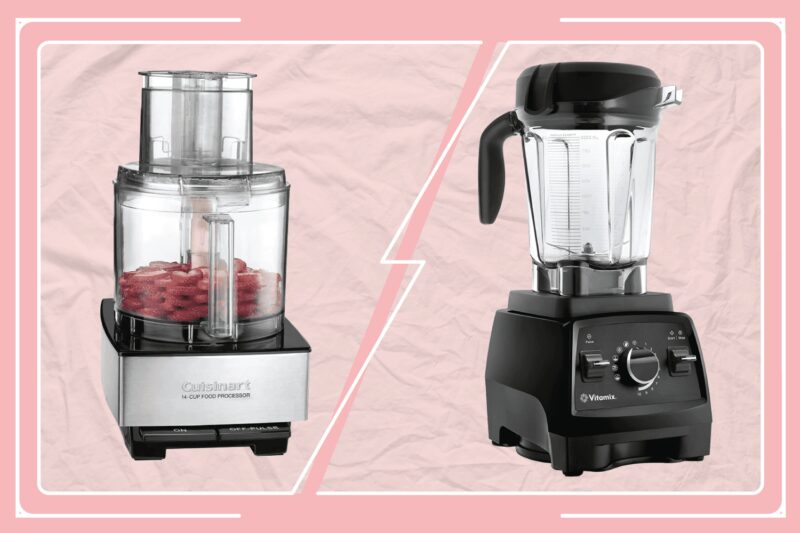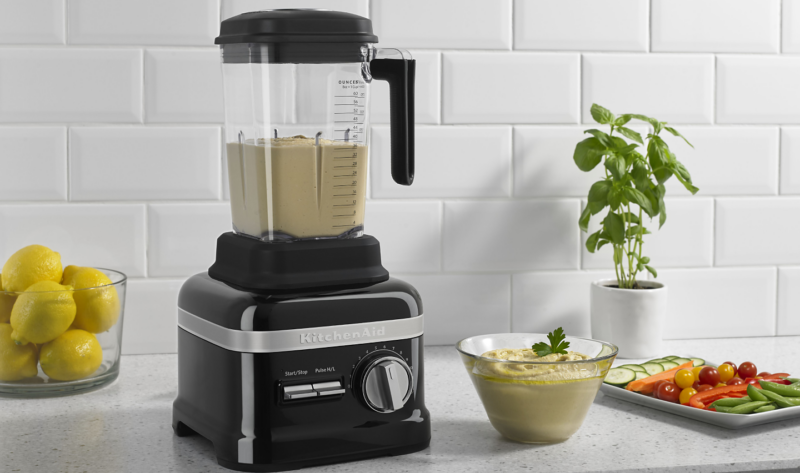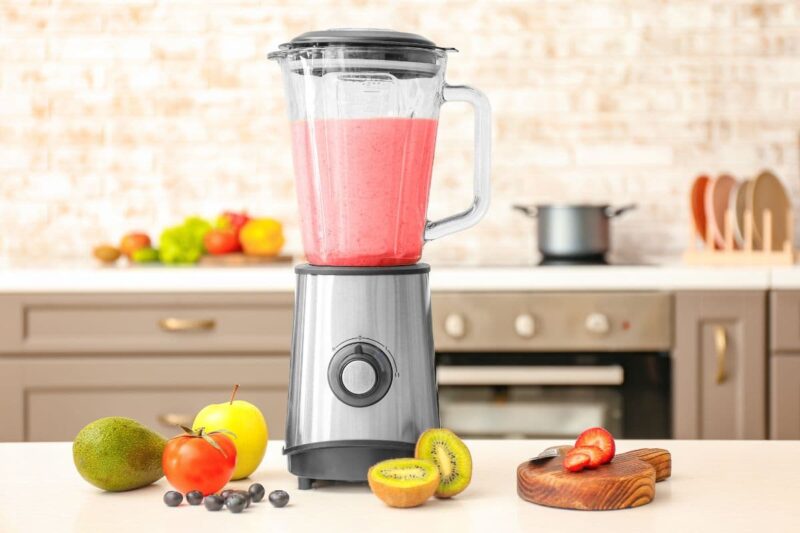Blenders and food processors are versatile kitchen appliances that assist in various culinary tasks. Blenders are typically used for blending, pureeing, and crushing ingredients, while food processors excel at chopping, slicing, and shredding. However, many people wonder if a blender can double as a food processor, saving them both money and counter space. In this article, we will explore the similarities, differences, and practicality of using a blender as a food processor.
Unveiling the Overlapping Culinary Powers
Blenders and food processors share several common features and functions. Both appliances are equipped with powerful motors that rotate sharp blades to process ingredients. They can handle similar tasks such as grinding nuts, pureeing fruits and vegetables, and mixing various ingredients together.
Additionally, both often come with different speed settings and pulse options, allowing control over the texture and consistency of the processed food.
Unraveling the Appliance Showdown

While blenders and food processors have overlapping capabilities, there are distinct design elements that set them apart. Blenders usually have a narrow and tall container, specifically designed for liquids and creating a vortex to pull ingredients down towards the blades.
On the other hand, food processors typically feature a wider, shallower bowl with various attachments, including slicing and shredding discs. These design differences influence the effectiveness of each appliance for different tasks.
Blenders as Makeshift Food Processors
Blenders can handle several food processing tasks with relative ease. They are excellent at pureeing soups, sauces, and baby food, providing a smooth and consistent texture. Blenders can also grind nuts, seeds, and spices, although the results may not be as finely ground as those achieved with a dedicated food processor.
Moreover, blenders can be used to make homemade breadcrumbs, crush cookies for pie crusts, and create creamy salad dressings. When processing small quantities of food, blenders can serve as a suitable substitute for food processors.
Limitations of Using a Blender as a Food Processor
Despite their versatility, blenders have limitations when used as food processors. One of the primary challenges is the size and shape of the blender container. The tall and narrow design can make it difficult to process small quantities of food effectively. Additionally, the blade configuration in blenders is optimized for liquid blending rather than slicing or shredding. Consequently, achieving consistent results with tasks such as chopping onions or grating cheese may be challenging. It is important to consider these limitations before relying solely on a blender for all food processing needs.
Another important aspect to consider is safety. Blenders are primarily designed for liquids and may not have the necessary safety features for handling solid food processing tasks. The absence of proper safety mechanisms, such as a feeding tube or a locking lid, can increase the risk of accidents when attempting certain food processing techniques in a blender. Care should be taken to ensure safe usage and to avoid potential injuries.
Techniques for Using a Blender as a Food Processor
To optimize the performance of a blender in food processing tasks, certain techniques can be implemented:
- Firstly, it is advisable to work with small batches of food to ensure consistent results
- Adding a small amount of liquid, such as water or oil, can aid in achieving smoother blends
- Pulsing the blender rather than running it continuously allows better control over the texture. Adjusting the blending speed and duration can also help achieve the desired results
Experimenting with these techniques will help users make the most out of their blender for food processing tasks.
Popular Recipes that Can Be Prepared Using a Blender as a Food Processor

Blenders are capable of creating delicious recipes that traditionally require a food processor. Here are a few examples:
- Salsa: Blend tomatoes, onions, peppers, garlic, cilantro, and lime juice in the blender for a chunky or smooth salsa, depending on personal preference.
- Sauces: Prepare homemade sauces like marinara, pesto, or even creamy Alfredo sauce by blending the necessary ingredients together. Blenders can help achieve a smooth and well-incorporated sauce.
- Hummus: Create a creamy and flavorful hummus by blending chickpeas, tahini, garlic, lemon juice, olive oil, and spices until smooth and creamy.
- Nut butters: Blend roasted nuts, such as peanuts, almonds, or cashews, until they turn into a smooth and creamy nut butter. It may take some time and occasional scraping down the sides, but the end result is worth it.
Creative Uses for Blenders Beyond Traditional Food Processing

Blenders can serve beyond their traditional role in the kitchen. Here are a few unconventional uses:
- Homemade beauty products: Blenders can be used to make homemade face masks, scrubs, and lotions by blending natural ingredients like fruits, vegetables, and oils. The blender helps in achieving a smooth and well-mixed consistency for these beauty products.
- Smoothies: Blenders are perfect for creating refreshing and nutritious smoothies by blending fruits, vegetables, yogurt, and other ingredients. They allow for quick and convenient preparation of healthy beverages.
- Textured beverages: Blenders can be used to create textured beverages by adding ice or frozen fruits. This technique is particularly useful for making frozen margaritas, daiquiris, or milkshakes.
Pros and Cons of Using a Blender as a Food Processor
Using a blender as a food processor has its advantages and limitations. Let’s consider both sides:
Pros:
- Cost-effective: Blenders are generally less expensive than dedicated food processors, making them a budget-friendly option for basic food processing tasks.
- Space-saving: Owning a blender eliminates the need for an additional appliance, saving valuable counter and storage space in the kitchen.
- Versatility: Blenders can perform many food processing tasks, making them suitable for a wide range of recipes and culinary needs.
Cons:
- Limited functionality: Blenders may struggle with certain food processing tasks that require slicing, shredding, or precise chopping due to their design limitations.
- Inconsistent results: Achieving uniform textures and consistent results can be challenging with blenders, especially when processing small quantities of food.
- Safety concerns: Blenders may lack safety features specifically designed for food processing tasks, increasing the risk of accidents when handling solid foods.
Conclusion
While blenders can be used as makeshift food processors for certain tasks, they are not a complete substitute for dedicated food processors. Blenders excel at blending, pureeing, and crushing ingredients, making them ideal for recipes like sauces, smoothies, and salsas. However, their limitations in slicing, shredding, and achieving consistent results should be considered.
Ultimately, the decision to use a blender as a food processor depends on individual needs and preferences. If the majority of food processing tasks involve blending and pureeing, a blender can serve as a convenient alternative. However, for more precise slicing, shredding, and chopping needs, investing in a dedicated food processor may be a better long-term solution.

